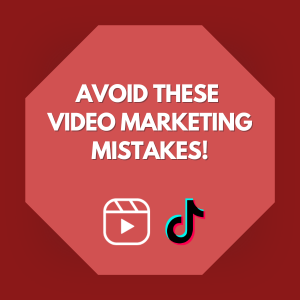Happy New Year! The new year is a time to reset and create new goals. As you sit down and look at your marketing plan for the year ahead, it’s always good to become familiar with the top trends in marketing. Social media is fast-paced and ever-changing, so that’s not to say these trends can’t change. However, based on research from the year prior and what social media users are looking for, these trends serve as a guide for where to begin!
Focus on Instagram
Instagram is the most used platform across generations, so it should come as no surprise as to why brands are prioritizing this platform. Since Instagram is a platform that lends itself to visual content, the focus on this app further reinforces that images and videos are the most effective content. Your library can continue to make marketing efforts across multiple social media platforms to reach your different audiences, as long as Instagram is included. Meta owning both Facebook and Instagram makes it easier than ever to coordinate posts for both platforms and keep track of analytics.
Embrace AI
You can’t hide from AI these days and if you’ve followed along with this blog, you know that we’ve encouraged exploring AI in your library’s marketing. We’re not suggesting letting AI take over for your content! However, there are so many ways that AI can create better efficiency in your everyday tasks and free up staff members to create more meaningful content. That means automating some of the more administrative tasks like creating social media clips, captions, or scheduling posts. Using AI to revolutionize your content creation and distribution is definitely a trend for the future in social media.
Keep Sharing Video
It might be nice to hear that something that has been trending for a couple years now isn’t going anywhere! Video is still the most effective form of content that engages viewers the most. There are mixed opinions on what length of video performs best—some experts say continue to keep it under 30 seconds for scrollers with short attention spans, while others argue the general population is moving more toward consuming long-form videos. The answer to that question lies within your audience. Finding your topic or theme and honing in on that is the best way to not only find your audience, but grow that following as well. The future is unclear for TikTok, but with or without the app, keep getting creative with storytelling through video.
Social Listening
How do you know what your audience wants to see? Social listening, of course! Social listening will never go out of style because it’s the most effective way to see how your marketing efforts are being received. Keeping your finger on the pulse of what your followers want will ultimately lead to better impressions and patron loyalty.
Utilize Stories
Since you’re already focusing on Instagram this year, why not take advantage of all its features?! If you’re not familiar, the Instagram (or Facebook) stories option allows content to be visible to followers for 24 hours and then disappear after that time is up. Since this content is temporary, it creates more of an urgency for followers, and therefore they’re forced to interact with it immediately if they choose. This is a great way to connect with patrons on surveys, feedback, or even behind the scenes content. Explore your creativity with this tool and see if you can improve engagement and reach through stories.



















